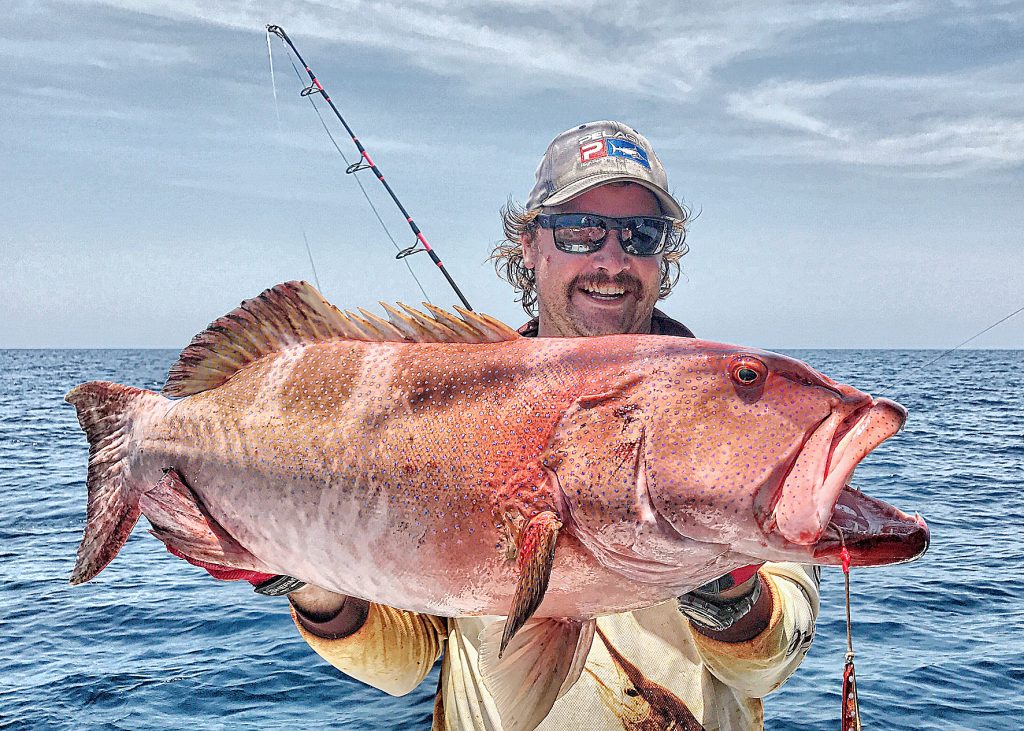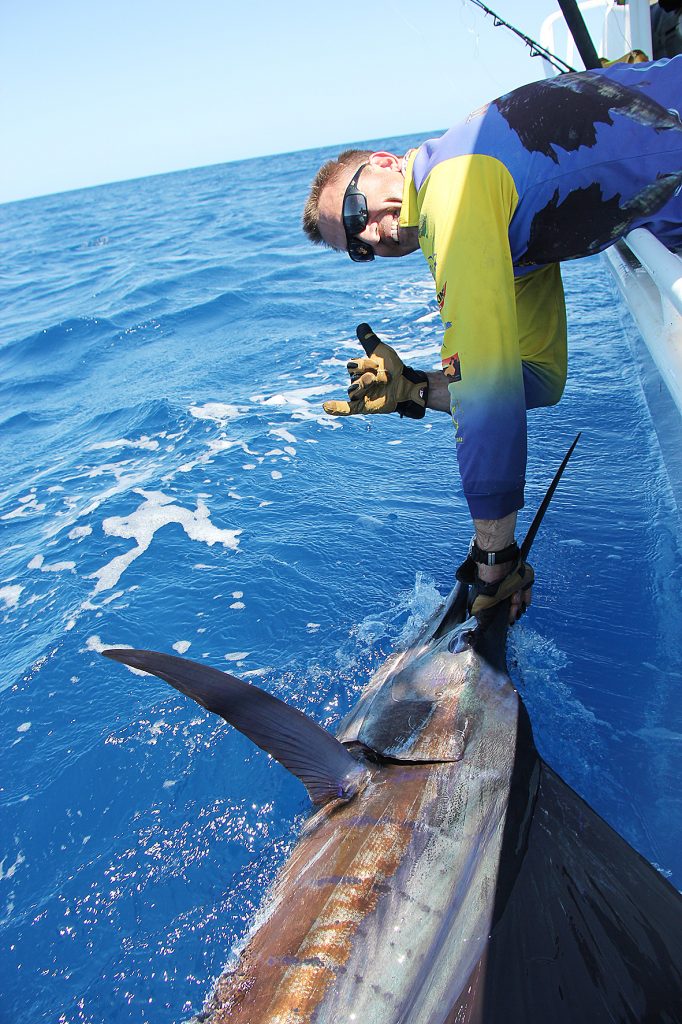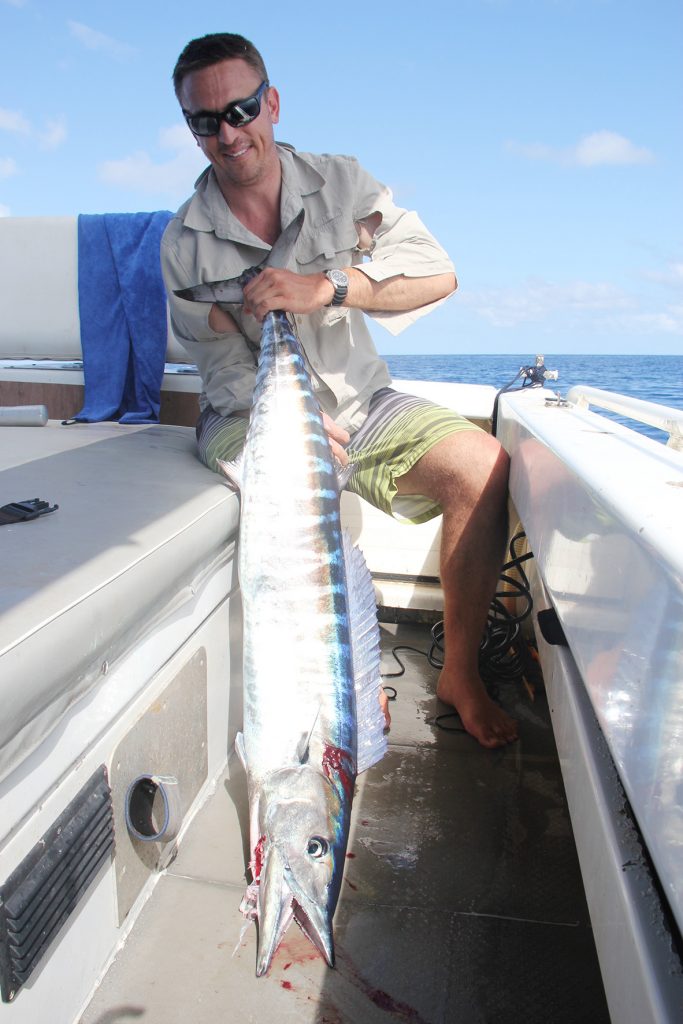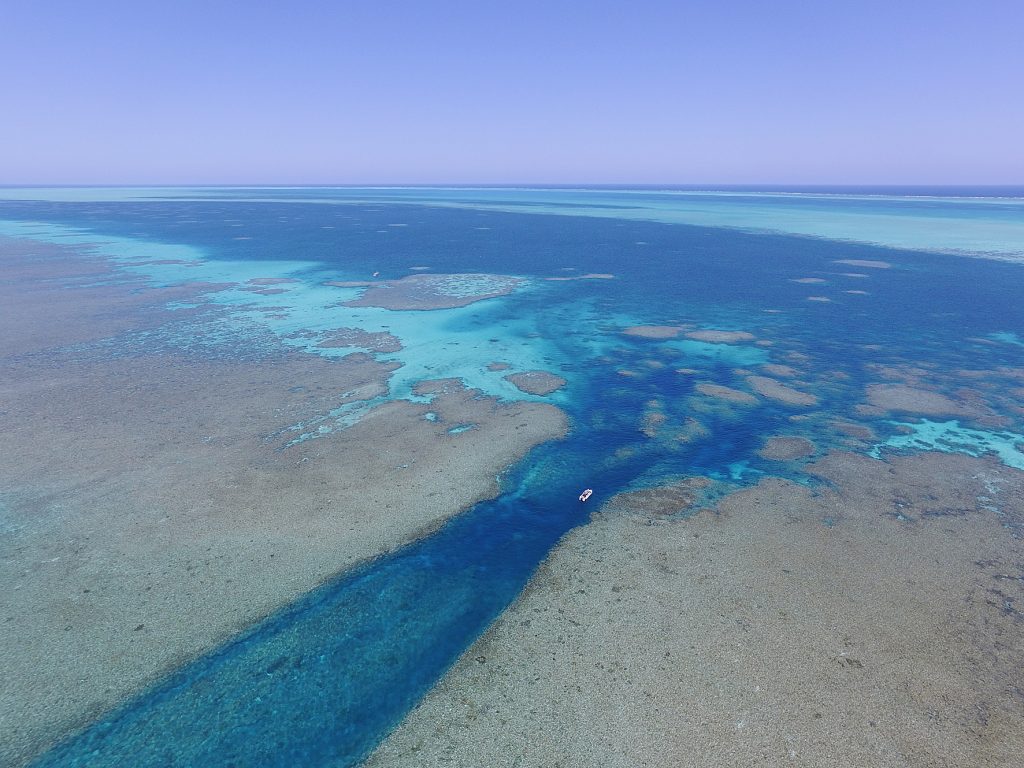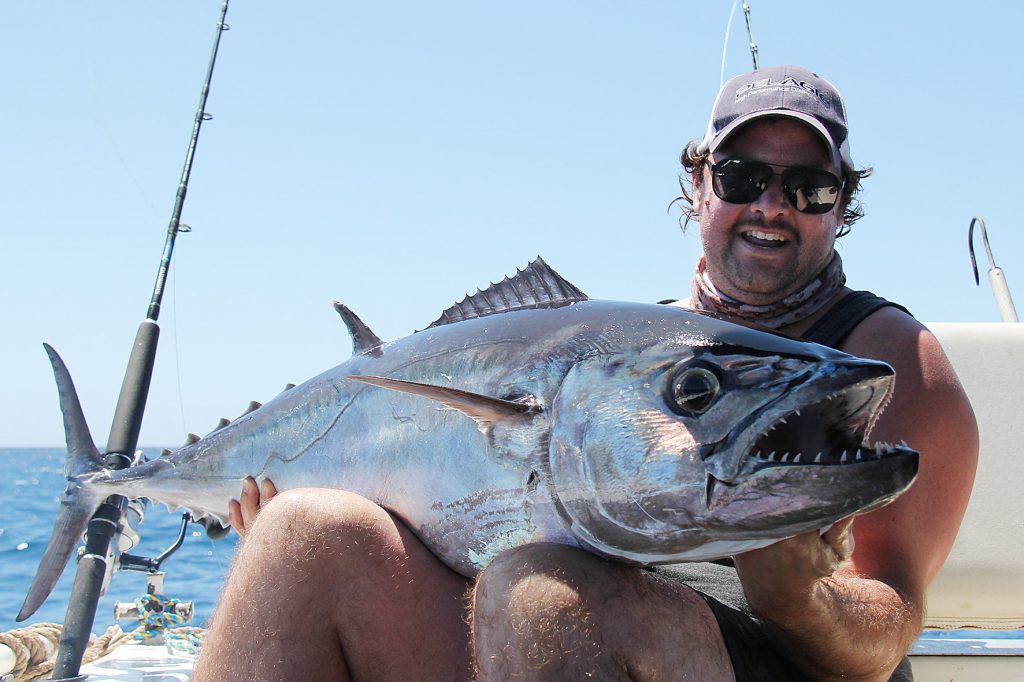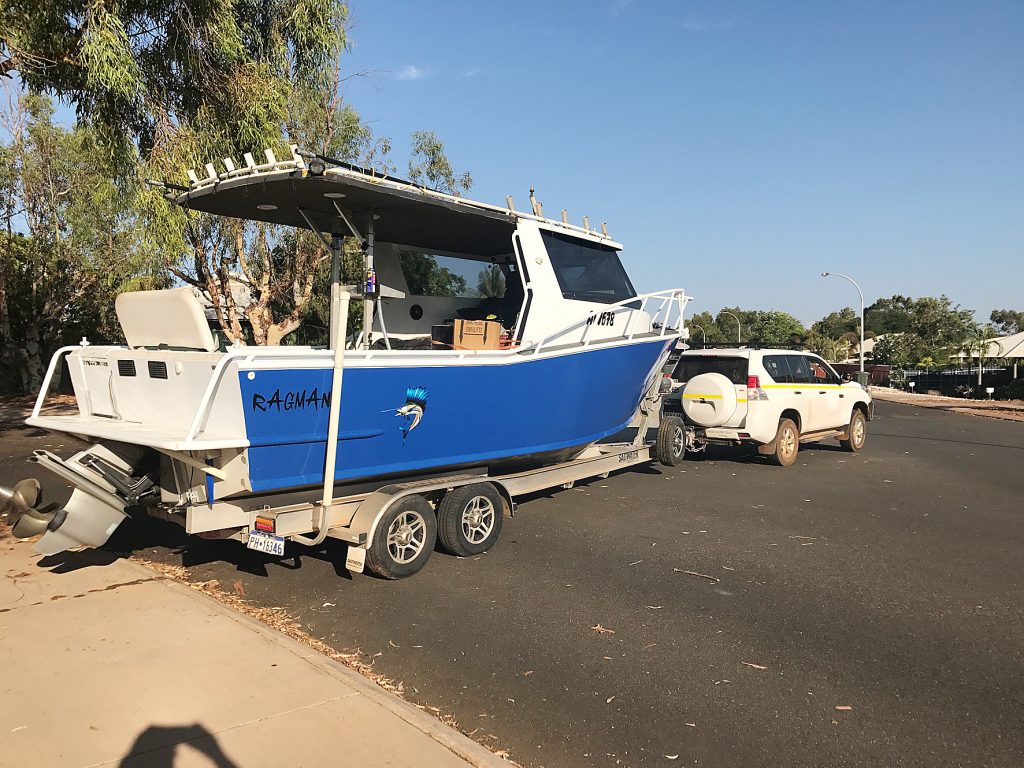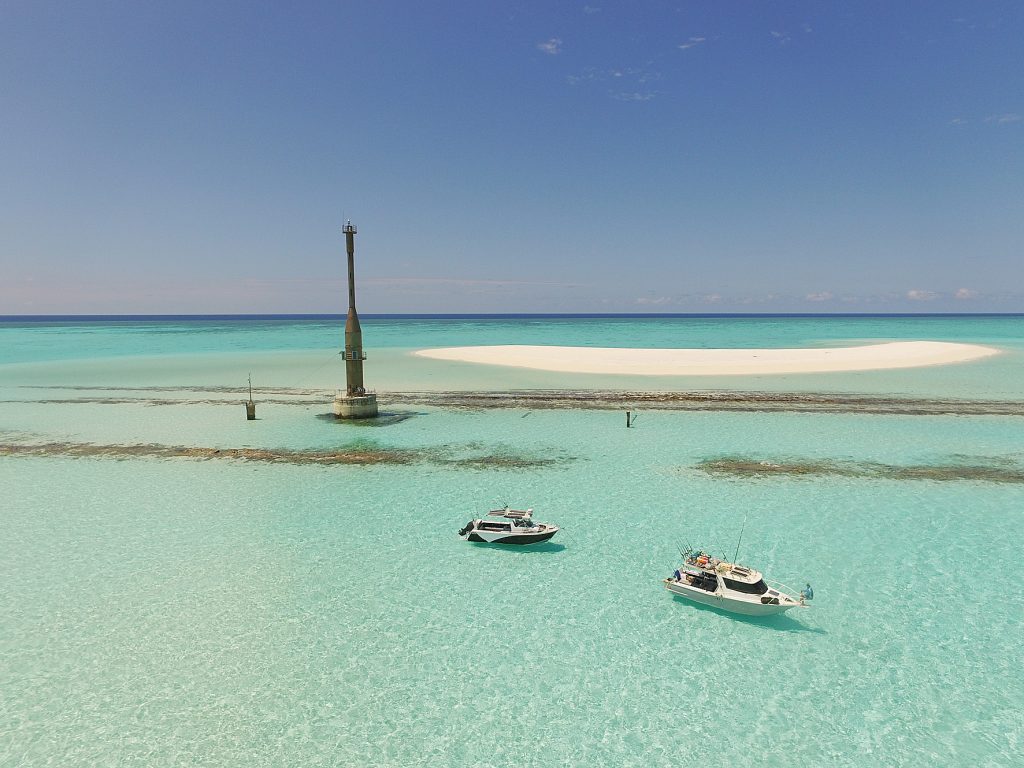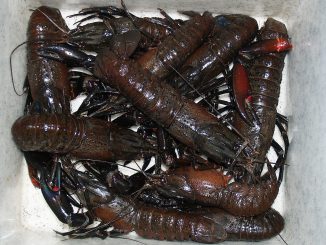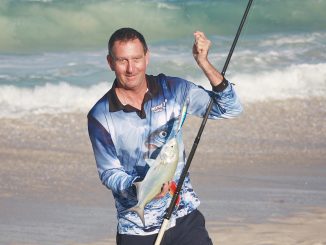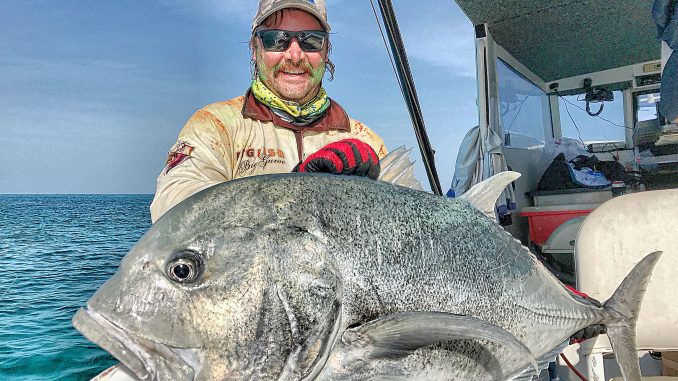
by Peter Hodgson •
Nothing gets the blood pumping more than planning an epic fishing trip, and when you live in the Pilbara nothing gets more epic than planning a trailer boating trip to the far reaches of the Rowley Shoals or Scott Reef. With aqua water, white sandy beaches and phenomenal drop-offs, these offshore atolls are definitely a sight to behold. Additionally, because they are so far offshore they don’t get much fishing pressure, so the fishing is amazing.
So when my mate Tas Higgins asked me if I’d be up for the adventure of a lifetime, I said “hell yes!” Tas had spent a few years watching weather patterns and speaking with various operators, and we decided that September would be the best time to go. The wind and seas are usually at their calmest from August to October in the area, and this is not a place where you want to be caught out in a 8m boat. I would also recommend getting a Buoy Weather subscription and FishTrack subscription, as these websites will give you the most accurate forecasts on wind, swell and water temperature.
Armed with what we had learnt, it was time to attempt to trailer boat the Rowley Shoals, 160nm northwest of Port Hedland. After booking our moorings at Clerk Reef and Imperieuse Reef, we started to prep the boat.
The Boat
Our vessel was Tas’ 8m Razorline Ragman, with a Volvo D4D 260hp diesel sterndrive. It’s a solid plate boat that’s great for offshore fishing, but we needed to perform a few modifications and additions before setting off on such a long trip.
First of all, we needed more storage so we extended the hard top to cover two thirds of the deck and allow for more equipment to be strapped to the roof. This equipment included fuel drums, a life raft and various other items not required on the deck.
Additionally, there was only 350L of fuel under the deck, which was not enough. We calculated that we’d use roughly 240L to travel the 160nm journey, and allowed for 40L a day – which is a lot for this boat, which usually burns 3L an hour on the troll. That’s pretty much as quick as you need to go out there, and we have found that this is the best method for catching all our pelagics. We were planning to spend six days out there, so we erred on the side of caution and bought two 180L fuel bladders and two 60L fuel drums.
Spares
We carried replacement hoses and belts, along with a comprehensive tool kit, to carry out any repairs in case of a breakdown. As you can imagine, help is a long way away.
We also brought the all-important repair and maintenance manual for the Volvo and leg. This manual has proven very handy when the motor has suffered some minor faults on a couple of our trips. We were back up and running in no time.
Safety
We acquired a commercial 6-person lift raft to add to the boat, along with lifejackets fitted with PLBs, a satellite phone and a Find Me Spot tracking device so our families could track our tip.
We also packed a comprehensive first aid kit, with supplies for everything from jellyfish stings to broken bones, hook removal and lacerations.
Supplies
We allowed for 20L of water a day between the three of us. A bit of overkill, but you can never have enough if things go wrong.
The food consisted of some precooked meals, a Webber Q and a fridge full of cryovaced meat. Although it’s great to eat fresh fish, after a couple of days you get tired of it.
All the food was stored in 2 x 80L fridges plus another a 110L fridge. There was no need for ice on the trip, thanks to the boat’s house batteries being continually charged by the 400W solar system on the roof.
Next we had to consider the sleeping arrangements for three blokes. We ended up putting two on the deck and one on the motor housing. In the past we have used swags, but on our other long-range trips we now use Sea to Summit inflatable mattresses and sleeping bags, and this has greatly increased our storage space. These mattresses and bags end up no bigger than a rum bottle (which we also had a few of!)
The fishing
Around these remote atolls you can expect to catch Jurassic-sized pelagics, including yellowfin tuna, wahoo, marlin, sailfish, Spanish mackerel and giant trevally, just to name a few. The reef fishing, however, is not the greatest. The main species are coral trout (protected throughout the Marine Park), long-nose emperor, Maori seaperch and red bass, so if you’re just after a feed of reefies, this is not the place for you. However, if you love battling big, hard-running pelagics, you’re going to have a great time.
We have been doing these trips for a few years now, and have gained an insight of what tackle is required – and how much. We didn’t bring enough lures on our first trip, coming home with less than a dozen between the three of us. People had tried to warn us that the sharks were bad, but we just assumed it was the same as anywhere else in the Pilbara. We were wrong. The sharks are definitely hungry out there, and ate over half of our lures in the first few days. I once read an article on the Rowley Shoals which said, “think of what you need, and then triple it”, and that sums it up.
Over the following years we armed ourselves with even more tackle, and used wire leader on all our deep divers and pushers. We fared much better but still lost a small fortune in gear.
We always bring the usual deep divers such as Rapala Magnums, Yozuri Hydro-Magnums and Manns Stretch 30s, and have found that the very deepest diving lures are very productive. We have added Mann Stretch 40s and Stretch 50s to the kit, along with some River2Sea 340 Killer Vibes, and it has paid off. The bigger the lures, the bigger the fish!
We retrofit all our lures with heavy-duty Owner split rings and Owner S-125 single hooks with crushed barbs. Not only do the crushed barbs make for easy fish release, they are also far easier to remove from an angler.
When it comes to jigs, the cheaper the better, and you should bring as many as you can pack. The hard-running dogtooth tuna and sharks eat anything that goes past them, so you’ll go through a lot of jigs.
We upgraded our reels this year, leaving all the small stuff at home. We brought 10000 and 20000 size reels with nothing less than 80lb line, and the trolling gear was also upgraded from 30 wides to 50 wides. The goal is to be prepared for the predation from sharks, and you also want to be able to put the hurt on when required in the shallow water around the atolls.
The Journey
We started our 160nm Rowley Shoal voyage from the Port Hedland boat ramp heading NNW to Clerk at 25 knots. Autopilot is a must for these trips, as driving a boat for 8-9 hours straight can be quite tiring, and the fuel saving on a trip like this would pretty much pay for the set-up. It’s certainly a long trip out, but the time goes pretty fast when you’re excitedly anticipating what the week might bring.
Clerk Reef
Bedwell Island is a sight to be seen, with the famous Blue Highway which directs you into the lagoon. As soon as you tie up to the mooring you know the place is fishy, with schools of big red bass, sharks and black jack trevally just waiting for anything to fall off the boat. The aqua water is crystal clear, and the bottom never seems far away, even in 30m of water.
Just 100m off the atoll you will find yourself in 150m of water, which plunges down to 450m in between the three atolls. From north to south, they are Mermaid (a sanctuary with no fishing), Clerk and Imperieuse reef.
We had limited knowledge of the Rowley Shoals on our first trip – just a rough idea of where and when to fish, and what species to target. Armed with this scant knowledge we started to explore Clerk Reef. As soon as we came out of the Blue Highway into the deep blue, the lures were in. In a matter of minutes, we were all hooked up to some solid yellowfin tuna.
Once that box was ticked, we continued down the north side heading to the south tip. We caught wahoo, green jobfish, barracuda, dogtooth tuna and sailfish all on the troll, using skirts and deep divers from 10-40m.
We pushed on down to the southern tip looking for pressure points and current lines to launch our surfaces lures at. Our lures were smashed by marauding red bass, footballer trout and – our target species – giant trevally, with several 20kg+ fish being boated.
Trout well over 10kg weren’t hard to catch either on surface lures, deep diving lures and slow pitch or flutter jigs. Just remember that they’re a protected species in the Marine Park.
Heading between Clerk and Imperieuse, we have raised and hooked several big blue marlin over the years, and have been absolutely blown away.
Imperieuse reef
With all the moorings now only on the northwest tip, you need to pick the weather when heading here. However, the fishing at Imperieuse is absolutely exceptional. It’s pretty much the same size as Clerk, but entering into the lagoon requires a lot more caution as it seems to be only achievable on a high spring tide.
Trophy fish have come over the side consistently when we have fished here from the northwestern to southwestern tip. These have included big dogtooth tuna, Goliath Spanish mackerel, some of West Australia’s biggest GTs and sailfish by the dozen. We have found that the best times to fish this area are around sunrise to mid-morning, and late afternoon to sunset. When you combine this with spring tides, the action is non-stop.
The fish have been easy to find here, with concentrations of bait easily marked along the edge of the reef as it drops from 30m-80m with big predators in pursuit. The result is hook-ups on every pass or drop.
Scott Reef was next on our list after conquering the Rowley Shoals, but that’s another story!
In summing up, preparation is key on a trip like this. You should only attempt it when you’re confident that you know what to do in any of the situations that could arise this far from shore, be it a breakdown or a medical emergency. You don’t want to become anyone else’s problem or ruin another crew’s trip to the best fishing destination in Western Australia.


